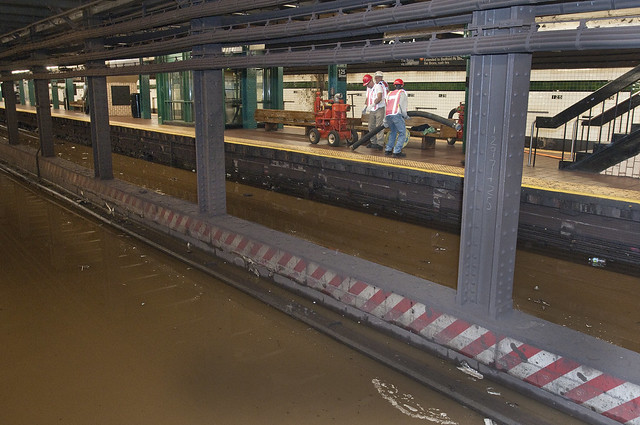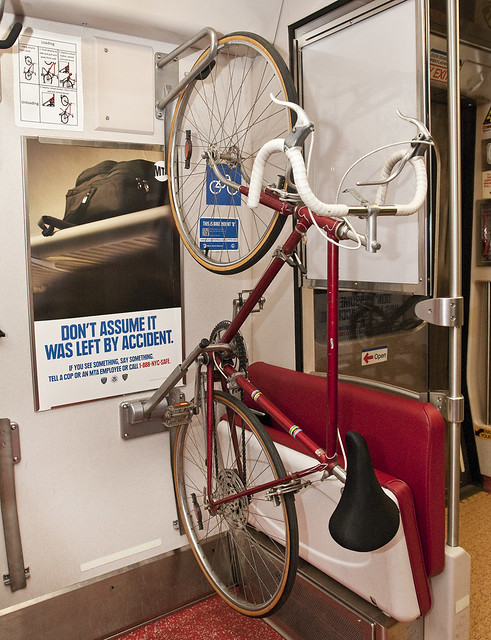
Suspicious activity is about the only creative announcement the PA CIS system is capable of broadcasting. (Photo by Benjamin Kabak)
For the past few years, I have been an unabashed supporter of the MTA’s new countdown clocks. The system, available in most A Division stations, is based on a signalling system that can assess where along the signal blocks and also how far away the next train is. Ostensibly, the system is flexible as well as the CIS part of PA/CIS allows the MTA to provide customer information to certain stations from a centralized location. Unfortunately, it doesn’t seem to work like that.
Last night, I had one of those moments that I often have at Nevins St. when something goes wrong with the subway system that could have easily been avoided. It’s happened often and usually it involves headways that are improperly spaced or an announcement that should have been made. Last night, it was the latter.
This story begins as my tales from Nevins St. often do: on a 4 train on the way back from Yankee Stadium. It was around 11:30 when we pulled into Nevins, and the PA/CIS clocks said the next local train was eight minutes away. Usually, I would just walk home from Atlantic in the face of an eight-minute wait, but I was tired and had a good book with me. So I waited.
As I waited out those eight minutes for the 3 train (with a 2 train just two minutes behind), another 4 came and went at Nevins St., and no signs of a problem emerged. The 3 arrived on time and inched its way to Atlantic Ave. I noticed something was wrong when it hit the switch and wound up on the express tracks. Only then did the conductor announce that all trains were running express from Atlantic Ave. to Franklin Ave. due to track work.
Now, this was not an unplanned service change. Had I read the service alerts before leaving or had I walked to the other end of the Nevins St. platform to inspect the one sign hanging there, I would have seen it. But I didn’t. Instead, I waited. I waited as the automated PA/CIS announcements alerted me to approaching trains. I waited in sight of a countdown clock that not once warned passengers of a service change. I waited near a column that had no hanging signs. In fact, only until I walked past Bergen Street — a station closed because of the service change — did I see a sign warning of the 11 p.m. start time.
Over the years, I’ve written about the MTA’s need to focus on its customer. The authority has taken great strides in the realm of technology, but it hasn’t yet bridged the gap between active and passive information. The conductor on my original 4 train should have warned riders that there would be no local service between Atlantic and Franklin Aves. The conductor on the next 4 train should have said the same thing, and the MTA, which has the ability to do so, should have programmed the PA/CIS monitor to announce the change. For nearly ten minutes, I waited in Nevins St. with no visible or audible sign of an impending service change.
Ultimately, last night, I learned a lesson I should have learned a long time ago. Even if there are no individual signs, it’s best to check the service advisories at any time of day. Still, the MTA should learn a lesson too from the numerous irate customers who found out about the change after standing around Nevins St. for ten minutes: Information is key. With new technologies, Transit can better alert its riders to service changes, and they can take an active role in doing so. That is, after all, why the new devices are called Public Address/Customer Information Signs. It’s in the name.










 (Overnight)
(Overnight)



 (Overnight)
(Overnight)





 (Rockaway Shuttle)
(Rockaway Shuttle)